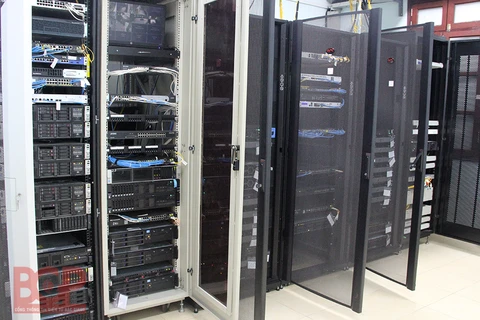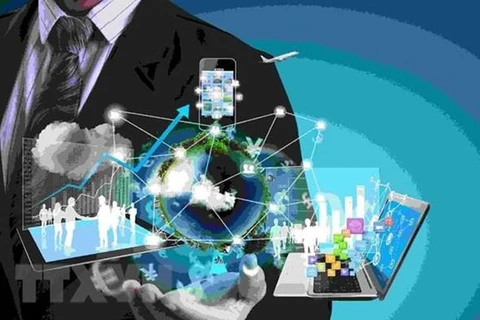Hanoi (VNA) – The Prime Minister on June 15 approved an e-government development strategy towards the building of a digital government in the 2021-2025 period, with a vision to 2030.
Digital government is oriented to be open for people, firms and other organisations to properly participate in the activities of and interact with state agencies, in a bid to jointly improve transparency and service quality, solve problems, and create value for society together.
Introducing the concept of "digital government" for the first time
A digital government is actually an e-government with changes in approach and implementation thanks to the development of digital technology. Therefore, developing digital government means developing e-government; digital government includes e-government.
E-government basically means no meeting, no paper, no contact when handling administration procedures, and cashless payment.
Digital government is e-government with safe actions on the digital environment; quick supply of new services; and a capacity for optimal use of resources, for creating development, for leading the country's digital transformation, and for effectively solving major problems in socio-economic development and management.
The digital platform is identified as a breakthrough solution to promote faster digital government development, reduce costs, and increase efficiency. It was created by excellent digital technology businesses, allowing agencies, organisations and individuals to use the platform as a service instead of having to invest and operate it themselves.
Digital government is oriented to be open for people, firms and other organisations to properly participate in the activities of and interact with state agencies, in a bid to jointly improve transparency and service quality, solve problems, and create value for society together.
Earlier, the development of e-government normally sets a goal of better serving the people, businesses and society.
The strategy also aims to build working tools so that officials, civil servants and other personnel can perform their tasks best. The working tools are virtual assistants or working and collaborating platforms on the digital environment.
In the fourth industrial revolution, pioneer nations who go first and act quickly, secure opportunities for breakthrough development. In other word, in the digital age, the faster ones will dominate. The strategy sets out the basic goal of completing the nation’s e-government development targets by 2021 and forming a digital government by 2025.
Vision for digital government development by 2030
According to Minister of Information and Communications Nguyen Manh Hung, e-government targets set by the strategy will be basically completed in 2021 with all online public services meeting level 4. Level 4 services are automatic provided on demand around the clock, and new services are offered on an open database in a timely manner. The digital government is set to be formed in 2025, Hung added.
Under the strategy, Vietnam sets out five groups of targets: providing high-quality services to society; expanding public engagement; improving state agency operations; effectively addressing important issues in socio-economic growth; and making a breakthrough change in the national ranking for e-government, with the goal of making Vietnam named among the United Nations’ top 30 countries in the world in digital government.
To this end, the strategy identifies six key national tasks: improving the legal environment; developing digital infrastructure; developing digital platforms and national-scale systems; developing national digital data; developing national applications and services; ensuring the safety and security of the national network.
The strategy also outlines the role and responsibility of ministries, industries, and localities in promoting new digital technologies such as Cloud Computing, Big Data, Mobility, Internet of Things (IoT), Artificial Intelligence (AI), Blockchain, and social media, in order to save time and cost in building and operating information systems and automating and optimising work processes./.

























